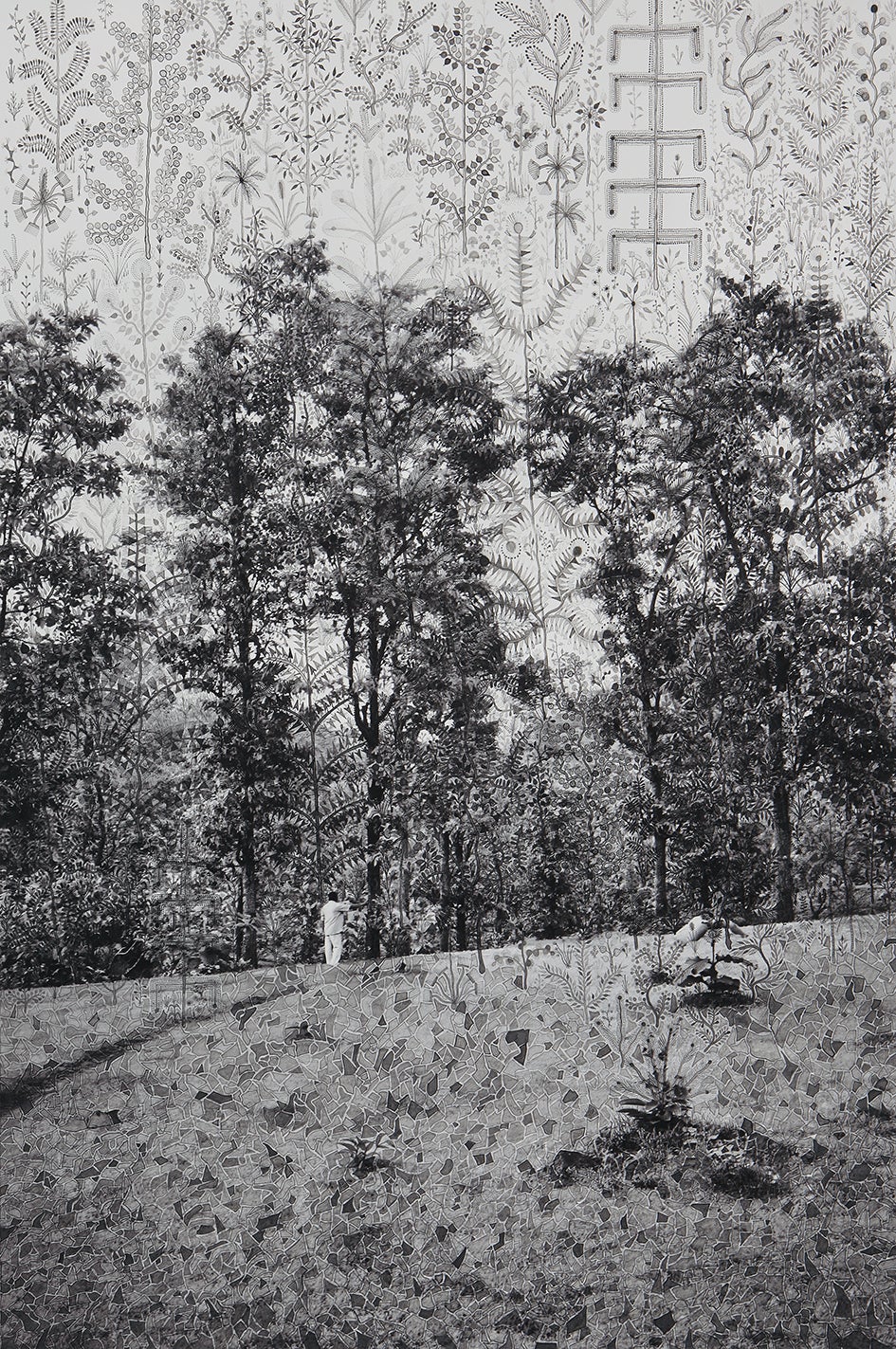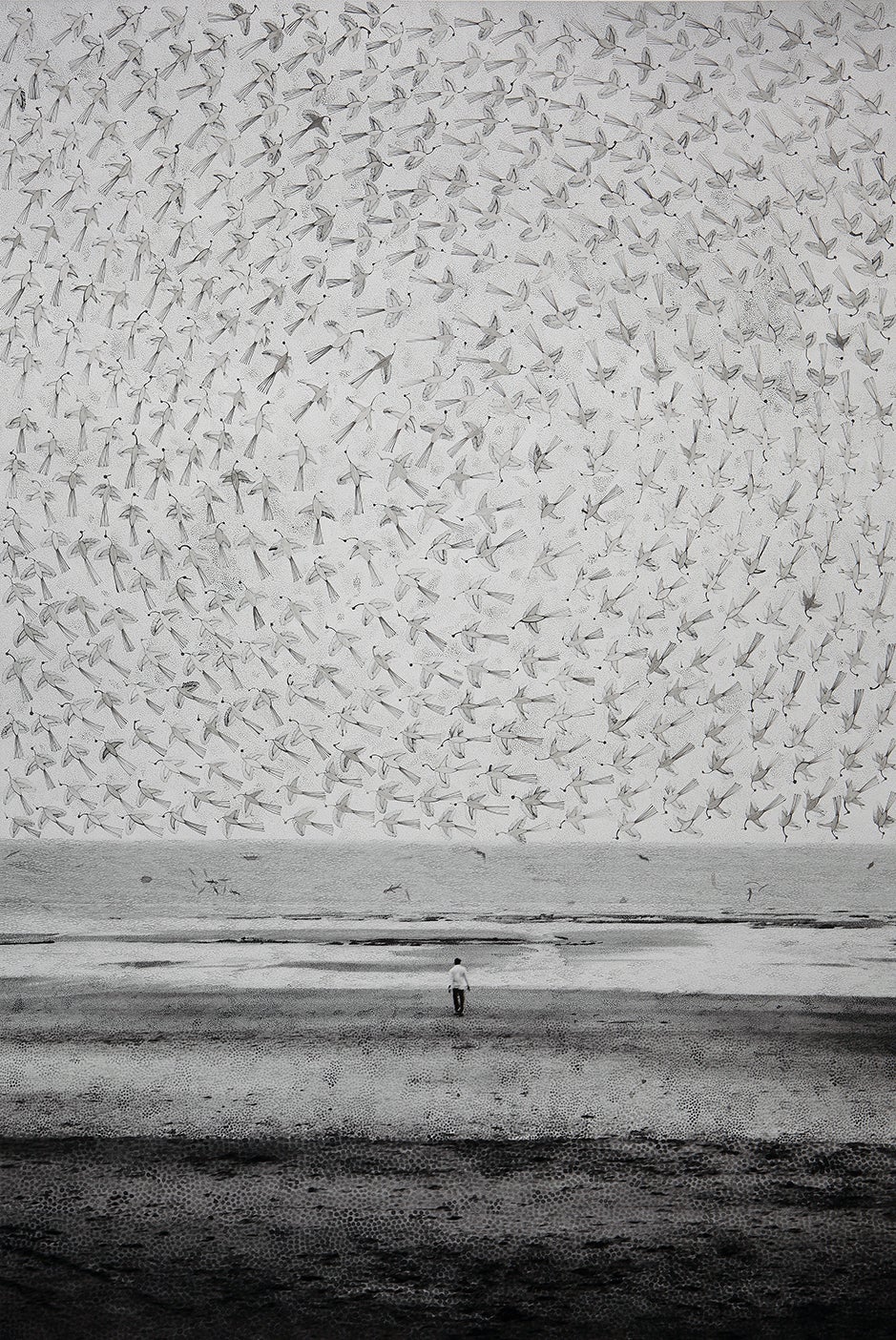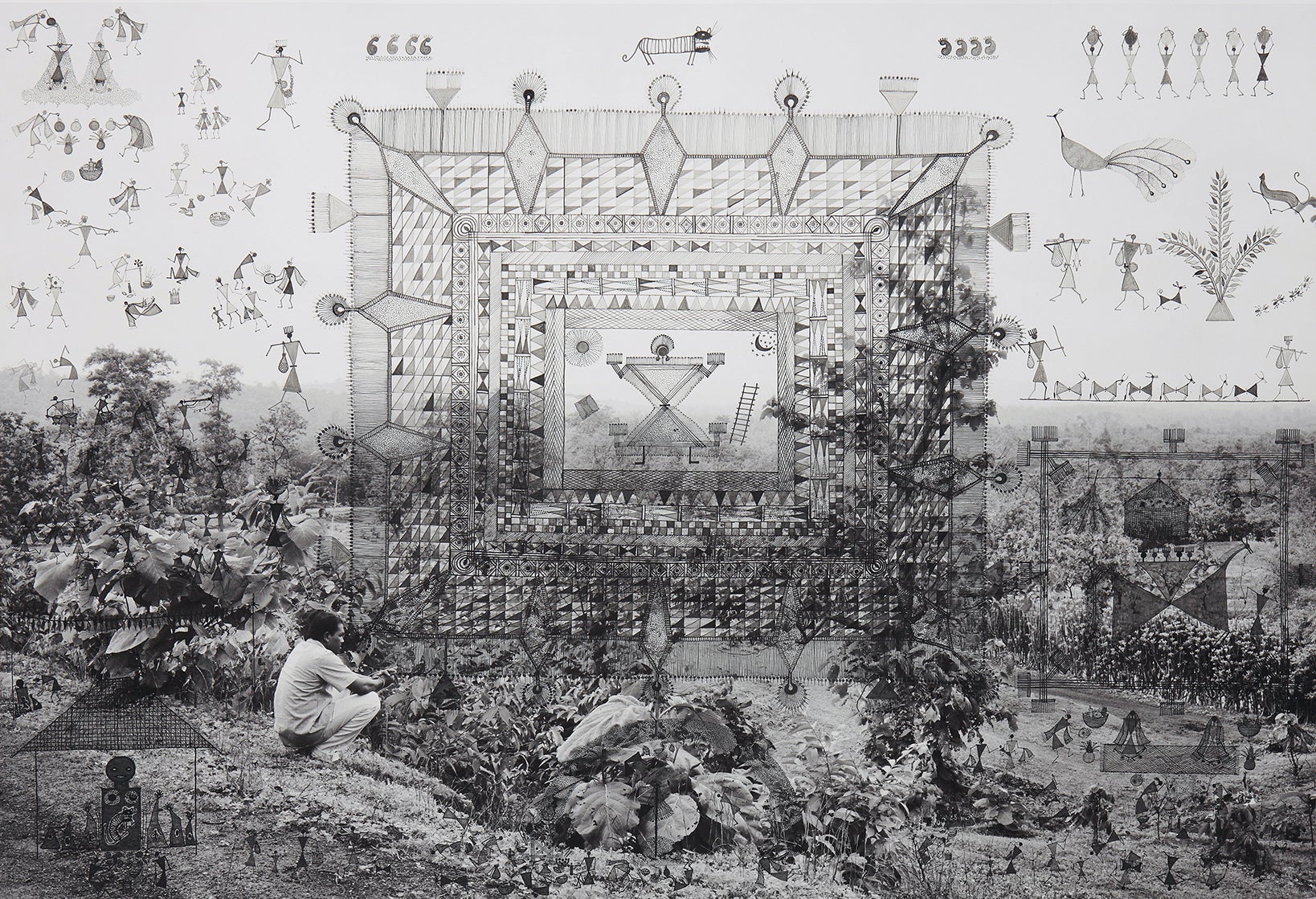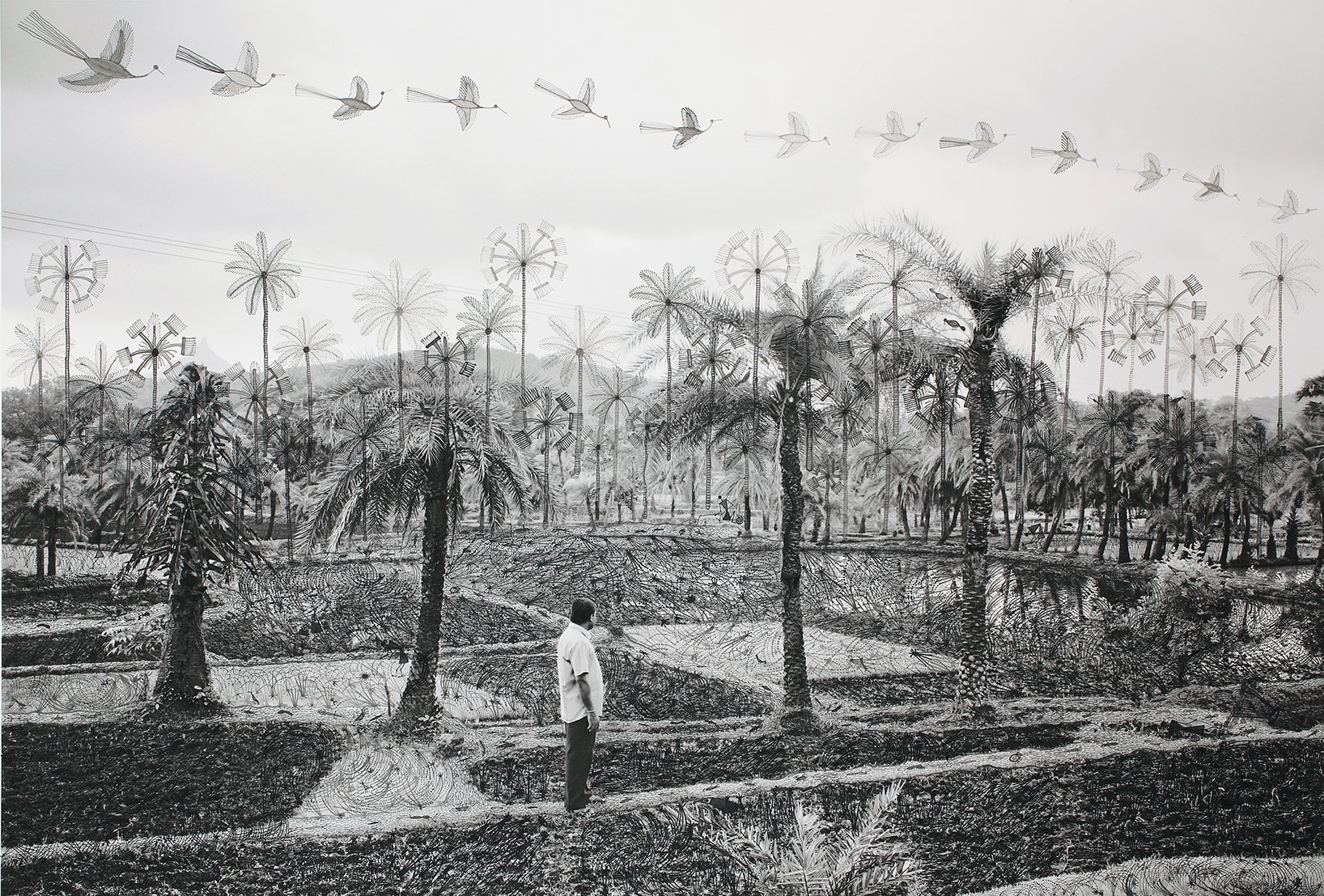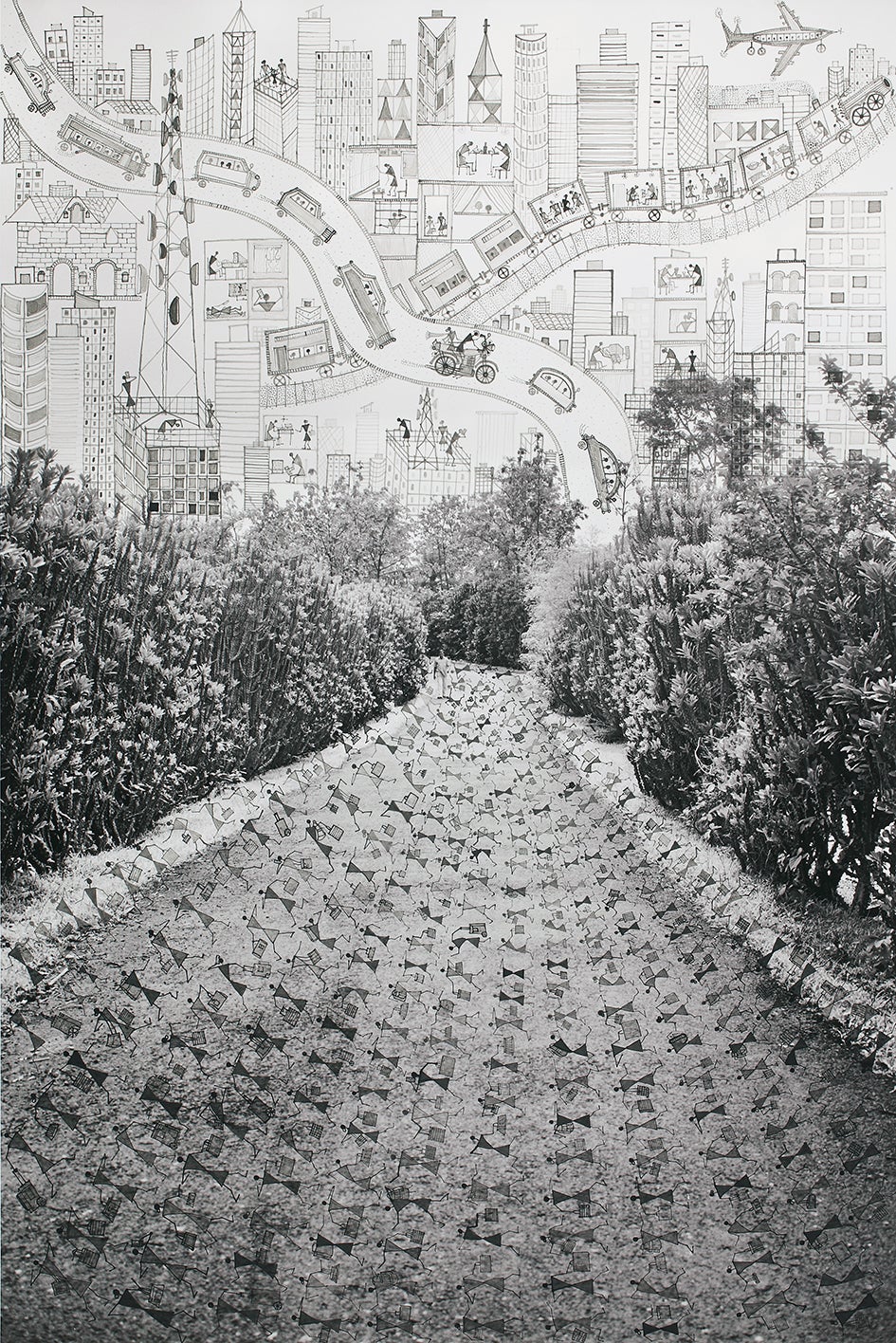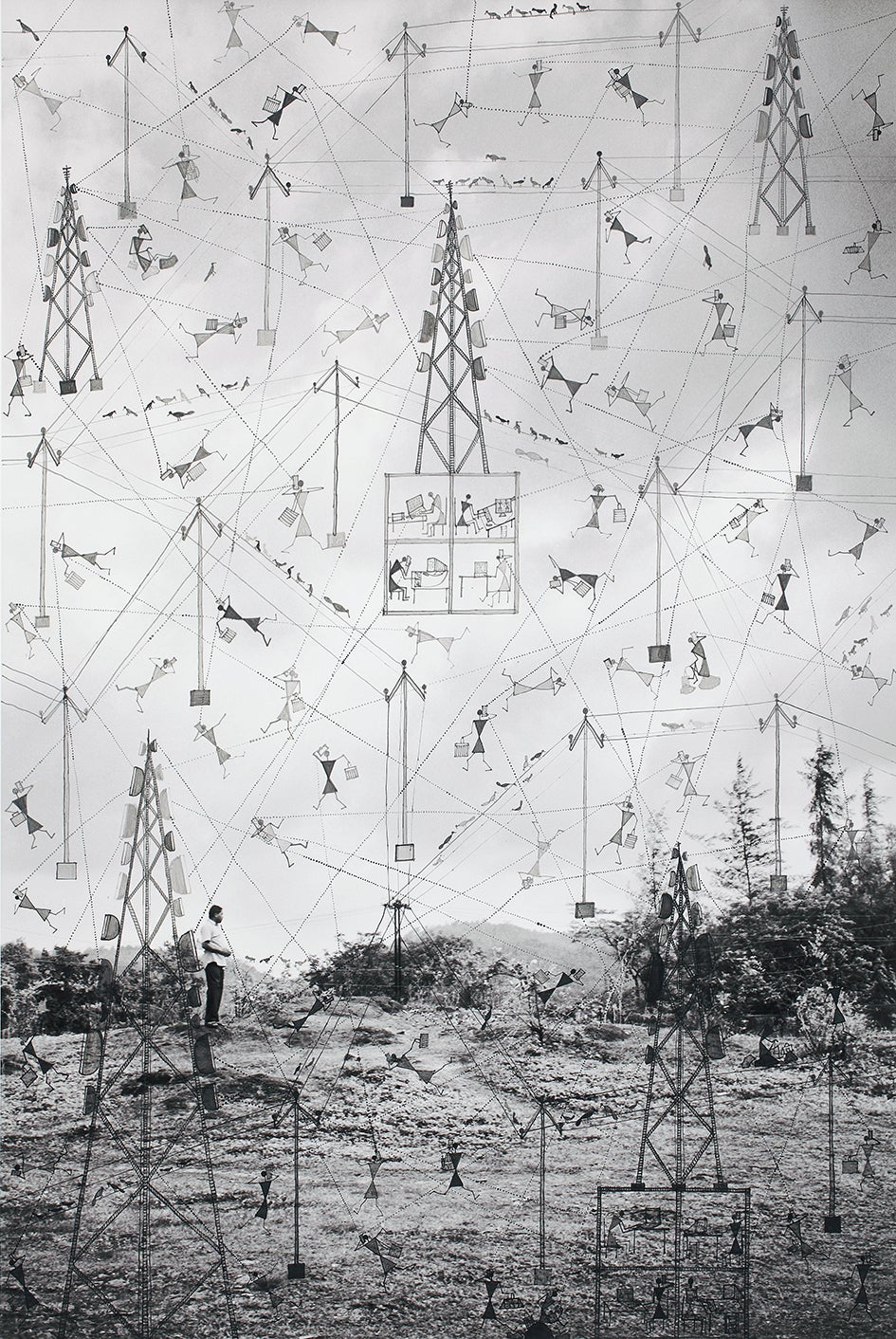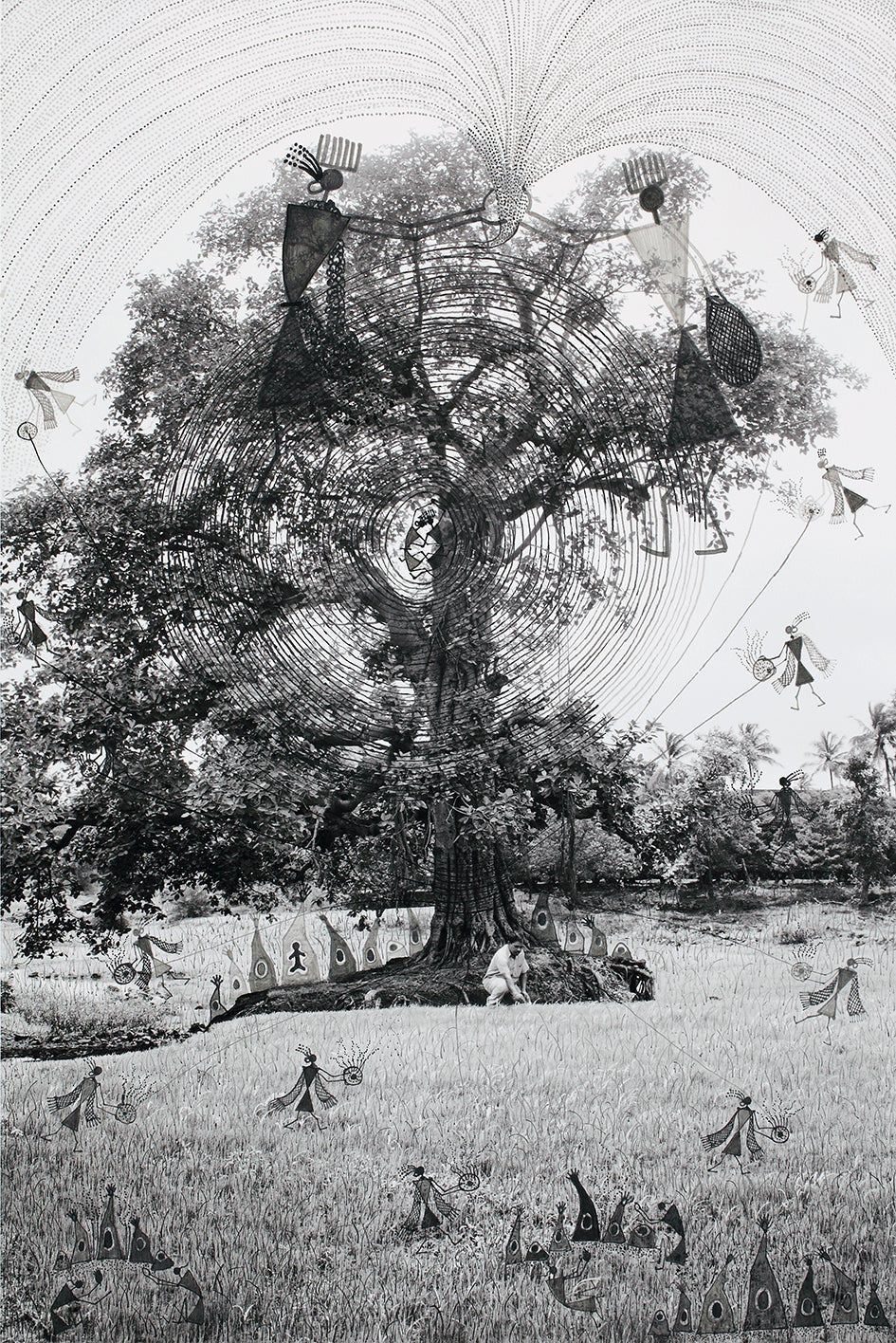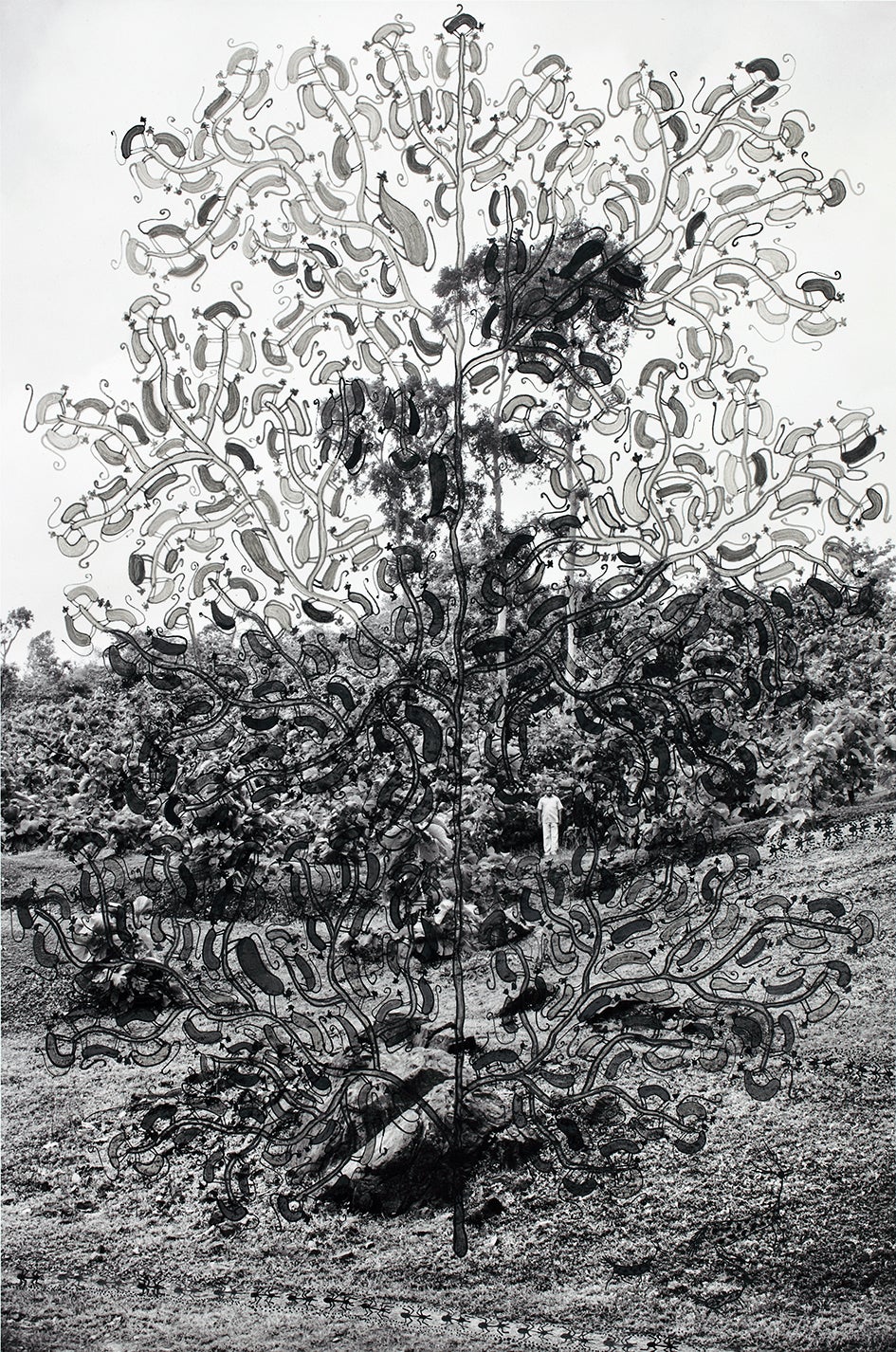When an ancient tribal art depicts modern Indian life
It only takes a couple of hours from Mumbai to reach the land of the Warlis. One of India’s many ancient tribes, they live along the Maharastra-Gujarat border. They are easily identifiable through their art, depicting stylized figures walking in whirlpools, dancing, and working in the fields with animals.
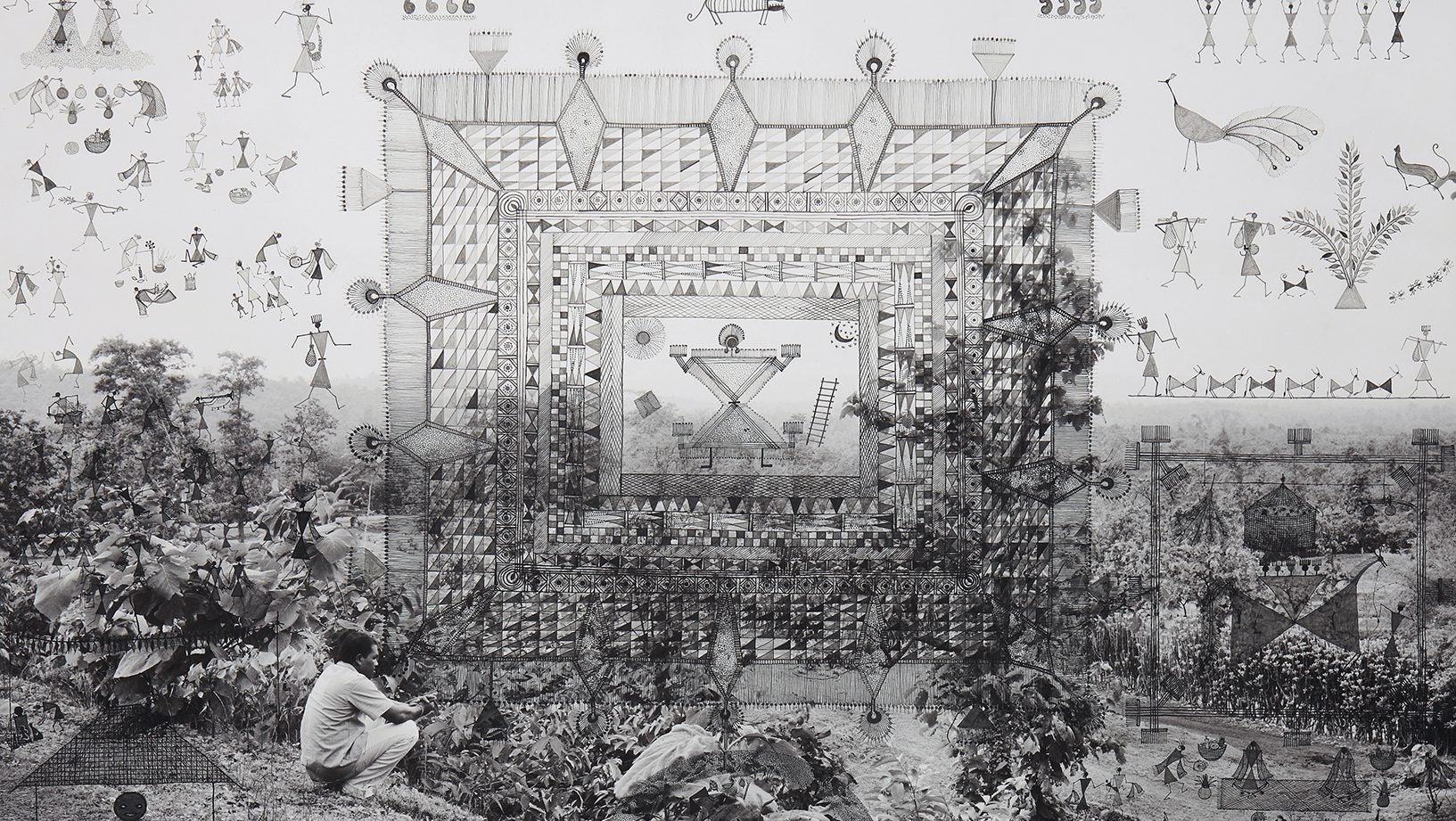

It only takes a couple of hours from Mumbai to reach the land of the Warlis. One of India’s many ancient tribes, they live along the Maharastra-Gujarat border. They are easily identifiable through their art, depicting stylized figures walking in whirlpools, dancing, and working in the fields with animals.
Like many forms of traditional Indian art—Rajasthani miniatures, Gond drawings, Patua illustrations—Warli art, too, is somewhat formulaic. And yet its beauty interrogates the difference between art and craft.
What turns an artisanal skill into something worthy of being labelled “art”?
Surely, Warli artist Rajesh Vangad, who painted the large Warli mural in Mumbai’s airport, and photographer Gauri Gill, have the answer.
Between 2013 and 2016, Vangad and Gill worked on two sets of 20 and 14 images, collected in a body of work titled Fields of Sight. They encapsulate the magic of Warli art and the marvel that is its survival in contemporary India.
The black and white works are a series of pictures by Gill augmented by Vangad’s ink drawings: a cloud of birds escapes a smokestack; tiny, stylized black figures swim in the water of a local stream; men fish with drawn nets; skyscrapers, planes and car (breaking away from traditional subjects) overtake local shrubs.
“This commingling work may be seen as an encounter between two artists of about the same age with entirely different languages,” writes Gill in Granta, in an essay about this work. Their powerful meeting works as a metaphor of India today.
“As with much of life,” Gauri told Quartz, her encounter with Warli art “was random chance.” Gill was invited to make portraits for the local school in Ganjad, Maharastra, and met Vangad. They slowly came to the idea of working together: he would inscribe his drawings over her photographs, telling the stories of the places she photographed.
Gill, who has never before collaborated so closely with another artist, describes their process as ”two minds together, working conceptually and formally to try and create new dimensions upon a flat surface.”
The voice coming through the work is a harmony that bridges time: photography captures the present, the drawings add the knowledge of previous generations. But the collaboration has also brought the present into Vangad’s art: alongside the trees, in Fields of Sight, he drew factories, cars.
“I am a creation of my stories, which live in my work,” Vangad wrote in Granta. However, he explained to Quartz, these stories are changing: “Earlier we [Warli artists] shared our stories about the jungle and farming, but now the jungles are disappearing, the farming is less,” he says. ”If life is different why would painting not be so?” he asks, saying Warli artists “have to show how the old relates to the new.”
